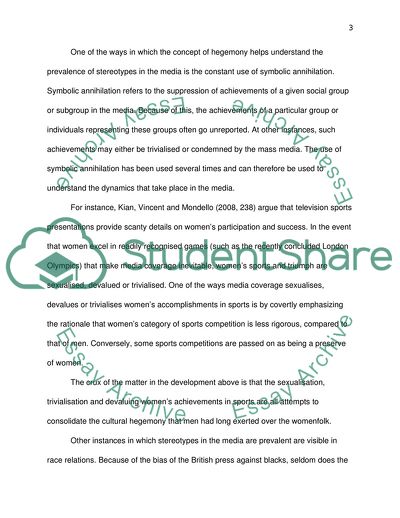Cite this document
(Representation according to Stuart Hall Coursework, n.d.)
Representation according to Stuart Hall Coursework. https://studentshare.org/politics/1786170-1-according-to-stuart-hall-what-is-representation-explain-how-this-concept-applies-to-cultural-diversity-and-the-media-2-what-is-hegemony-does-this-concept-help-understand-the-prevalence-of-stereotypes-in-media-concept-explain-and-justify-your-answ
Representation according to Stuart Hall Coursework. https://studentshare.org/politics/1786170-1-according-to-stuart-hall-what-is-representation-explain-how-this-concept-applies-to-cultural-diversity-and-the-media-2-what-is-hegemony-does-this-concept-help-understand-the-prevalence-of-stereotypes-in-media-concept-explain-and-justify-your-answ
(Representation According to Stuart Hall Coursework)
Representation According to Stuart Hall Coursework. https://studentshare.org/politics/1786170-1-according-to-stuart-hall-what-is-representation-explain-how-this-concept-applies-to-cultural-diversity-and-the-media-2-what-is-hegemony-does-this-concept-help-understand-the-prevalence-of-stereotypes-in-media-concept-explain-and-justify-your-answ.
Representation According to Stuart Hall Coursework. https://studentshare.org/politics/1786170-1-according-to-stuart-hall-what-is-representation-explain-how-this-concept-applies-to-cultural-diversity-and-the-media-2-what-is-hegemony-does-this-concept-help-understand-the-prevalence-of-stereotypes-in-media-concept-explain-and-justify-your-answ.
“Representation According to Stuart Hall Coursework”. https://studentshare.org/politics/1786170-1-according-to-stuart-hall-what-is-representation-explain-how-this-concept-applies-to-cultural-diversity-and-the-media-2-what-is-hegemony-does-this-concept-help-understand-the-prevalence-of-stereotypes-in-media-concept-explain-and-justify-your-answ.


